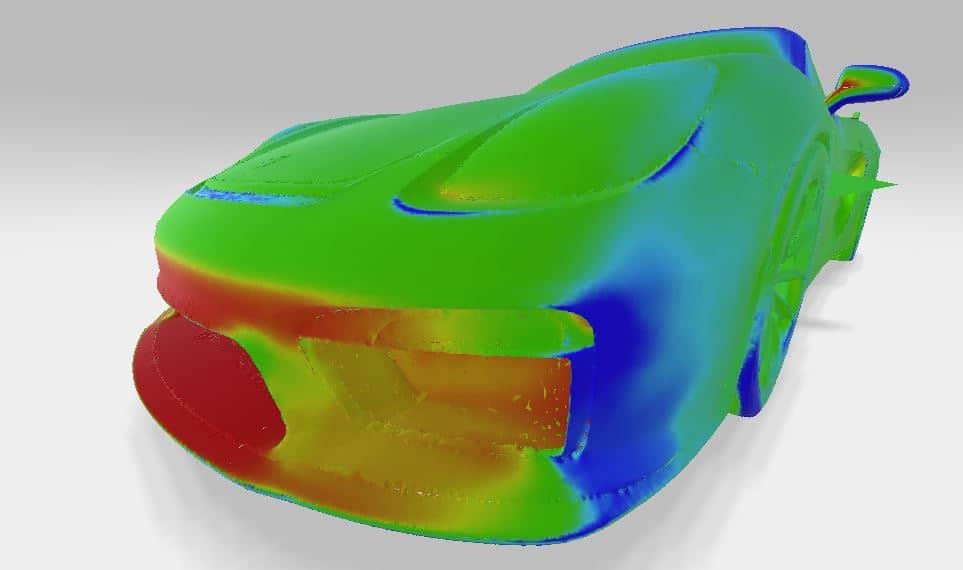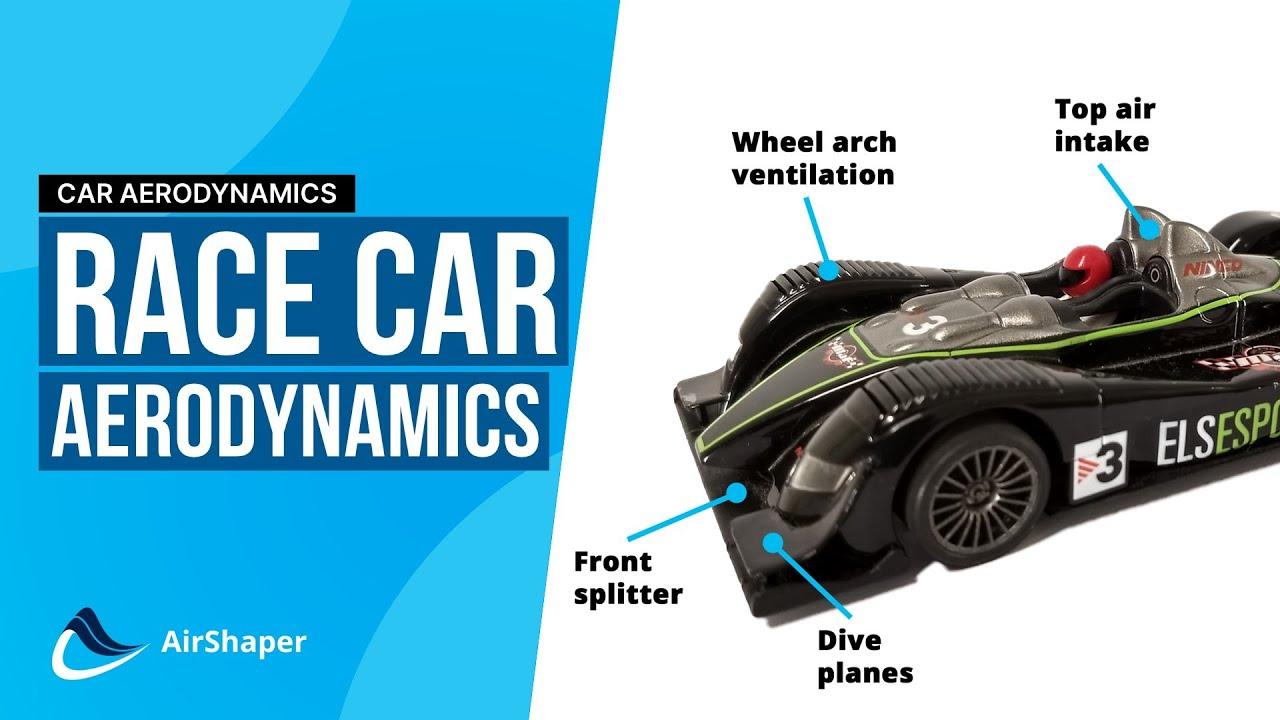Ever wondered what components make up a typical race car aerodynamics package?
Allow us to walk you through the main devices and how they work.
We'll begin our analysis at the front of the car, working our way rearwards in the order of which air interacts with the various components. We'll be covering:
- Front splitter
- Dive planes
- Wheel arch ventilation
- Top Air intake
- Rear wing
- Rear Diffuser
Frontal area
As a first step, the frontal area of the car should be as small as possible. Aerodynamic drag is linearly proportional to frontal area. A larger car effectively acts as a blockage for the oncoming airflow and consequently increases drag. This is why modern race cars look small and are low to the ground. What is Aerodynamic drag?
Front splitter
The front splitter is a flat protrusion that extends from the front bumper. When oncoming air hits the car, a high pressure zone is generated in front of the bumper. This high pressure pushes onto the front bumper as well as down onto the splitter. The resulting pressure difference between the top surface of the splitter and the fast, low pressure air passing below, creates a net force that sucks the splitter towards the ground - generating downforce for the front tires.

Dive planes
Dive planes are curved planes at the front wheel arches that deflect the wind upwards, pushing the front of the car down as a result. While not as effective as wings or splitters, they can be useful tool in increasing those last few points of downforce.
Wheel arch ventilation
The front wheels rotate at a high velocity which creates a high pressure zone inside the wheel well. Ventilating that high pressure air through openings at the top of the front wheel arches helps aid additional downforce generation.

Top air intake
Internal combustion engines generate more power when the air intake is filled with high pressure air. The aerodynamics package can help provide this by positioning the air intakes high above the car in clean, free-stream air.
Rear wing
The rear wing works using the same principles as an airplane wing, but has an inverted profile so that the force generated is directed downwards. Rear wings perform optimally when placed in clean airflow, free from the turbulence and energy loss generated by other upstream components. Discover how wings generate downforce.

Rear diffuser
The diffuser is an expansion zone at the rear of car that improves the transition of airflow underneath the car to the wake behind the car. When done right, this accelerates the air underneath the car, creating a low pressure zone which generates extra downforce. What is a rear diffuser?
A strong aerodynamics package not only generates high downforce and low drag, but also maintains a consistent ratio of front to rear downforce. This is known as aerodynamic balance and controlling this balance ensures that all four tires on the race car work equally hard. An imbalance of tire forces can lead to understeer or oversteer which ultimately sacrifices lap time. Therefore, it's important to understand the performance of the entire aerodynamic package and how one device affects another downstream when developing aerodynamic components. Learn more about aero mapping.

